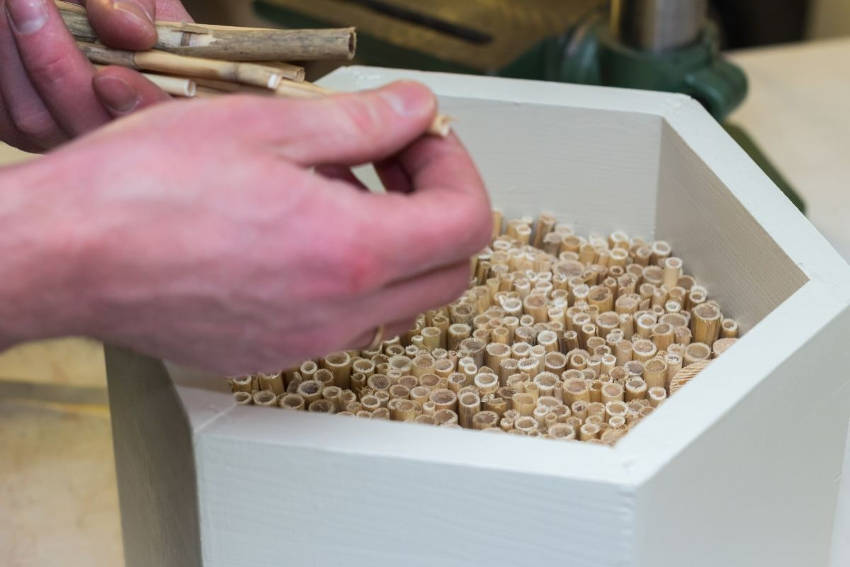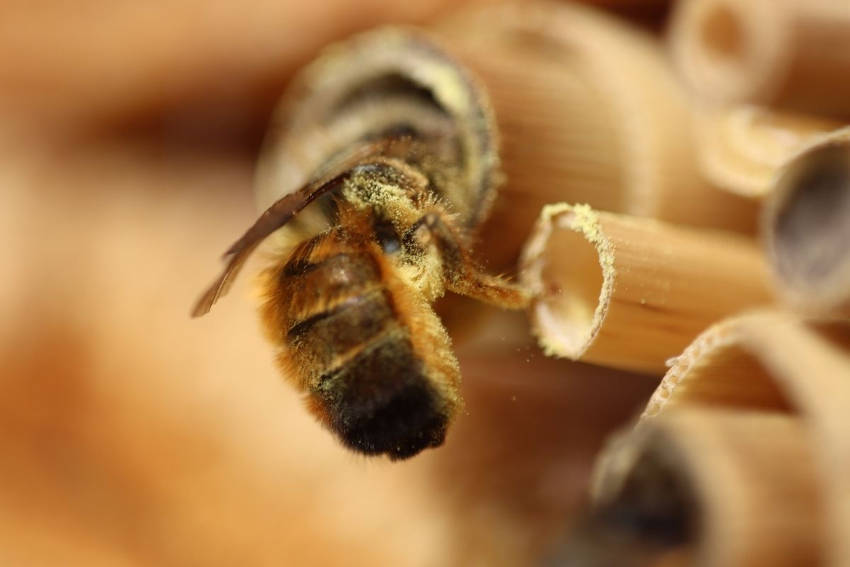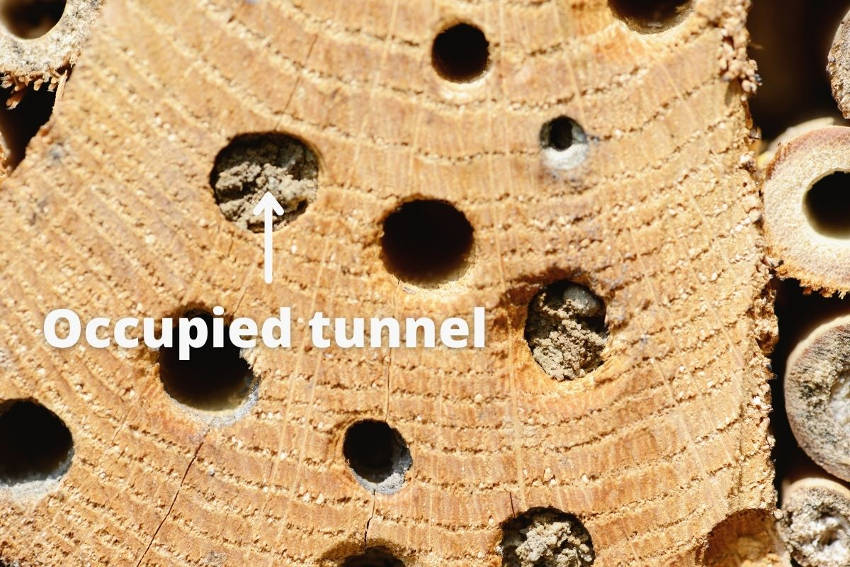It's impossible to overestimate the importance of a healthy insect population to your garden's ecosystem. Without pollinators like bees, moths and beetles, your efforts at growing many kinds of fruit and vegetables will come to little, while wasps and other insect predators play a key role in keeping pests under control completely naturally. And what's more, a garden that's packed with insects builds a solid base for the local food chain, helping to attract birds and other wildlife for greater biodiversity.
Insects will find their way into almost any garden naturally, but considering the challenges many species face from pesticides and habitat removal, taking positive steps to help them is a highly worthwhile effort. Providing insects with a safe and comfortable place to live is a great way to start, and that's where a so-called bee hotel comes in.
What is a Bee Hotel?
Some of the most beneficial insect species in a garden are solitary bees and wasps, which naturally set up home in hollow plant stems, holes in trees, or tunnels in rocks or soil. Essentially, a bee hotel is an artificial recreation of their preferred nesting conditions, offering them an easy route to a safe and comfortable base in your garden.
There's a wide variety of bee and insect hotels available commercially, many with attractive designs that can become garden features in their own right. It can also be inexpensive, fun and easy to create your own. Whether you buy or build, it's important to provide a shelter that gives bees and other insects what they need in a home. Here's what it involves.
Bee Hotel Basic Design
The basic structure for the bee hotel should be a frame (usually square or rectangular) with an open front, a closed back and a solid roof at the top. The roof should overhang the front of the frame by at least 5cm to stop rain from getting into the living quarters, helping to keep the hotel dry and mould-free. The solid back is important both to provide rigidity and also to keep the wind out of the nesting spots. Within this frame, you'll add a variety of stems, sticks and wood blocks to provide the crevices, cracks and tunnels which will make up the individual rooms in the hotel.
While you can in principle make the hotel any size you want, in general you'll be aiming to attract solitary insects, and it's best to make each structure smaller rather than larger. Many of the most beneficial insects will reject hotels that pack too many residents too closely together, as this increases the risks of disease, parasites and even predator species living in the structure.
Bearing this in mind, a typical structure would be around 30cm wide and high, and around 20cm deep. If you want to provide space for more insects, you could always build multiple hotels and spread them around your garden.
Choosing the Hotel Materials
When building the hotel, it's best to use materials that are as natural as possible. It's fine to use repurposed or salvaged wood, but untreated is best, especially for the actual nesting areas. Consider sanding down any stained or painted wood to keep chemicals to a minimum. Likewise, if you want to paint the hotel for visual effect, only paint the outer surfaces.
For the roof, strength and waterproofing is important, so choose a sturdy hardwood, a reused terracotta roof tile, or similar.
Importantly, avoid using any glass or plastic anywhere in the structure as this can cause condensation and heat to build up, with potentially disastrous effects for the insects which take up residence.
Creating the Hotel Rooms
Within the wider structure there should be a selection of tunnel-like cells that the insects can crawl into. These are formed by placing a variety of materials lengthwise into the structure with the ends pointing outward. The most commonly used materials include:
- Small logs or sticks, which will form crevices and tunnels in the gaps between them. Importantly, only use completely dry wood with no rot or mould.
- Thicker logs or blocks of wood drilled with holes.
- Cardboard straws or tubes 2-10mm in diameter.
- Bamboo canes with an internal diameter of less than 10mm.
- Bundles of dried, hollow plant stems such as reeds, berry canes, and so on. Make sure the open ends are smooth to avoid injuring the insects as they squeeze in.
Drilling Holes in Wood
If you're making the cells by drilling holes into a larger piece of wood, there are several points to bear in mind.
- Vary the holes between 2mm and 10mm in diameter to accommodate different insect sizes.
- The holes should be at least 15cm long but can be longer; they shouldn’t pass completely through the wood. Again, varying the depths is a good idea, although just drilling to the depth of your drill bit is fine.
- Make sure the holes' entrances and insides are smooth, clear, and free of splinters to avoid damaging the insects' wings. Use a countersinking drill bit or sandpaper to smooth the entrance edges, and also tap out any sawdust from inside the hole itself.
Where to Place Your Insect Hotel
For the highest occupancy levels, the hotel should be fixed at least a metre off the ground to deter predatory lizards and frogs. It should also be securely fastened to keep it steady in the wind, placed in a sunny location facing north or northeast, and kept away from fast-growing vegetation that could cover the entrances.
Regular Hotel Maintenance
As with any hotel, cleanliness is key to attracting and retaining guests. At the end of each summer, check the cells for occupancy, and if there are any overwintering insects, leave them alone. Otherwise, clear any debris out of cells that have been used and abandoned.
As spring arrives, take another look and clear away any buildup of moss or debris, and prune back any surrounding vegetation to ensure the hotel's face stays clear and unobstructed.
And lastly, before each year's new arrivals, check whether any of the straws, reeds, or sticks are starting to deteriorate, and replace them if needed.
The lives of insects worldwide are made difficult by the overuse of pesticides and removal of habitats. Installing a bee hotel in your garden will make a small but extremely useful difference, and you'll also enjoy the pollination and pest control benefits in return.









